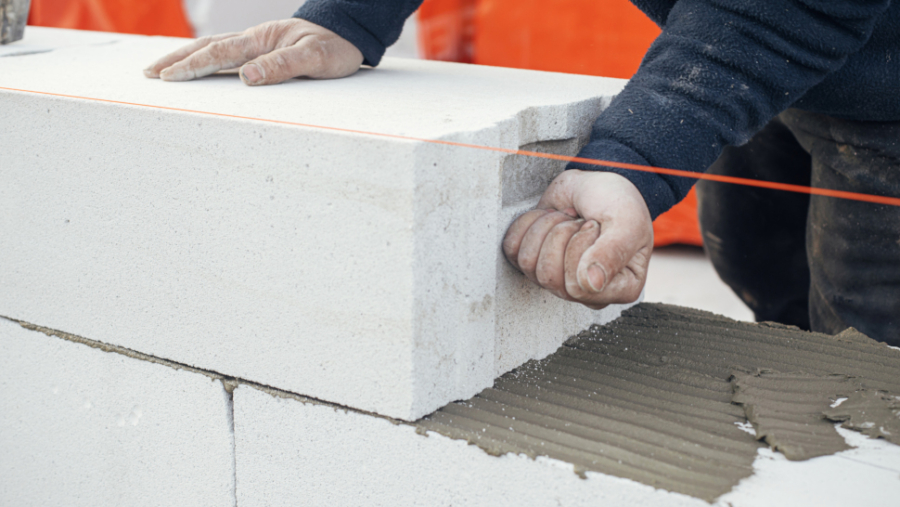
Government launches inquiry into the use of historic building material RAAC in schools
31 August 2023

Thousands of pupils face Autumn term disruption being in schools which have been identified by the Department for Education (DfE) as being at risk of structural collapse. A form of concrete (RAAC) widely used in the construction of educational institutions in the UK from the mid-1950s is under review in light of the dangers which have been identified.
What is RAAC?
Reinforced autoclaved aerated concrete (RAAC) is a lightweight form of concrete which came into common use in the UK some decades ago in the construction of government buildings, including schools and other educational institutions. The risks which have been highlighted relate to RAAC being less durable than traditional concrete and which can result in structural failure.
In fact, the risk of RAAC related structural failure was first identified in 2016 with the masonry collapse at a school in Edinburgh where part of the outer skin of a cavity wall fell onto an area used by pupils. There was also a collapse of a school roof in Kent in 2018 which was attributed to failing RAAC.
Recent concerns
In September 2022, the Local Government Association issued a safety briefing notice highlighting concerns that RAAC had life-expired and was liable to collapse. Most recently, there has been a report from the National Audit Office (NAO) that a number of schools have had to close temporarily due to significant RAAC safety concerns.
The NAO has confirmed that many hundreds of schools now require major rebuilding or refurbishment work due to the risk of collapse, including where buildings on a school’s site are at, or are approaching, the end of their design life-expectancy and where RAAC structural integrity has become impaired.
Regulatory background
The DfE is working with bodies responsible for RAAC schools and new regulations are proposed, however there is already a significant regulatory regime which applies to the construction, refurbishment and maintenance of school buildings.
For example, the Education Act 1996 places a duty on the Secretary of State to prescribe standards for the premises of all maintained schools in England and Wales. This includes the School Premises (England) Regulations 2012 which apply to all existing and new schools maintained by a local authority.
Similarly, the Education Act 2022 empowers the Secretary of State to set premises standards for independent schools, including Academies and Free Schools and which are set out in The Education (Independent School Standards) Regulations 2010. While there are two sets of Regulations, the requirements are regarded as being identical.
When it comes to the construction of new schools and to alterations and improvements to existing school buildings, the Building Regulations 2010 set the standards for the design, construction and safety of all buildings and seek to ensure the safety and health of people in and around buildings, and also cover energy conservation and accessibility. The Regulations require that school buildings are structurally sound and able to withstand expected loads and forces.
Otherwise, the Health and Safety at Work etc Act 1974 sets out the general duties of employers including that institutions such as schools ensure the health, safety and welfare of employees and others who may be affected by the activities which take place. The Act applies to aspects of maintenance and refurbishment, emphasising the importance of risk assessments and taking necessary precautions to protect individuals.
Department for Education RAAC guidance
Given the serious risks involved where RAAC has been used in a school building’s structure, the DfE has set out specific guidance for bodies responsible for such buildings, including to seek specialist advice to assess the condition of any RAAC and to develop management plans.
Steps required include:
- Ensure that any RAAC property in the school portfolio has been identified
- Ensure the condition of all relevant buildings are regularly monitored, taking a risk-based approach which gives due deliberation to the use of the building with consideration given to the possible impact of reduced maintenance
- Ensure RAAC properties are regularly inspected by a structural engineer, including using a cover meter to check the provision of traverse and longitudinal reinforcement, to note deflections, check the panels in the vicinity of supports, to assess the width of support bearing structures, record cracking, water penetration and signs of reinforcement corrosion and any inconsistencies between panels
- The frequency of inspections should be determined by the structural engineer conducting the initial inspection
- Adopt good roof maintenance practices such as ensuring water outlets are clear and are at a level which allows free drainage of water from roof areas. If the internal surface of any relevant concrete planks is to be decorated, use paint which allows moisture vapour to pass through it. Protect external surfaces with a coating which provides an effective barrier against the transmission of liquid water.
In addition to the above you should also ensure:
- Where appropriate, reduce the dead load on roofs by removing chippings and replace with an appropriate solar reflecting coating
- Ensure all waterproof membranes are maintained in good condition
- Keep records of deflections of RAAC planks and inspect the construction regularly
- Ensure that those responsible for the day-to-day management of any RAAC building know that RAAC is used in the building and where it is used, and check regularly for visual signs of cracks, water penetration, deflection to soffits and ponding to roofs
- Ensure all staff know to report any cracks and or other identified potential defect issues and are instructed to immediately close off any part of the building where cracks or other material defects appear pending further checks.
While the Government inquiry to identify and remediate RAAC intends to locate the educational institutions affected, the extent of what remedial work will be required and how the work is to be funded is unknown.
Relevant bodies responsible for schools constructed using RAAC in its construction should ensure that they are aware of and take careful note of what it being asked of them in terms of considering and actioning the safety of RAAC based construction.
For advice or more information on the subject please contact Colin Jones.










